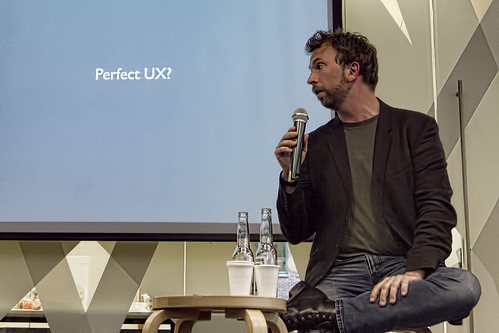the terrible and horrible realisation that you don’t know what somebody is talking about when you think that you probably should
it’s alright. you probably don’t need to know.
but it’s true, if that person is saying it, then omg omg omg you probably really should know it so you can at least acknowledge it and talk about it and update your slides to reference it and then explain how you’ve always been doing it but actually when you were doing it before people had a name for it it was just something you did as part of what everybody now calls holistic interaction experiential lean mapping or something omg omg omg I don’t even believe anything I say any more I’m a terrible imposter and I’m going to be found out why do I bother clearly I should just go back to compulsively rearranging the bookshelf in my bedroom I hate myself and want to die in a professionally self destructive kind of way.
but it’s alright. you probably don’t need to know.
but it’s true, if everybody you follow on twitter is making reference to it, then omg it’s even worse and now they’re all actually making it more obscure by making oblique references to some historical precedence which is clearly the foundation for the thing this person is talking about but omg omg since this is like THE CORE PRINCIPLE AND I DON’T EVEN KNOW THAT THEN WHAT HOPE IS THERE FOR ME and this person over here is already saying that the thing is already not a thing anymore and I was going to say something funny about the thing sounding a bit like a fruit or something but now I might as well just not say anything because I have no idea what I’m doing in this industry and everybody knows it and dammit it does sound like a fruit why can’t I just say that omg hang on the person who said it in the first place has now said what they meant was something a bit different to what everybody is saying and they’re all wrong and there’s a bit of an argument going on I wish I could say the fruit thing why don’t I know what’s going on.
but it’s alright. you probably don’t need to know.
but it’s true, if you’re sat in the half-darkness of a meetup in the basement of the faculty of brain hurt sciences or the half-brightness of a design agency eyebrow in a soho loft listening to that person you’ve always wanted to listen to and then they casually throw out reference to the thing and everybody in the room laughs and you don’t know why so you laugh along but you’re thinking to yourself omg I only just managed to get to grips with ironic self-referential unicorn bon-mots what is this that I’m now supposed to knowingly acknowledge without actually anybody actually ever telling me to my satisfaction WHAT IT ACTUALLY IS AND INCIDENTALLY I’M BEGINNING TO GET AM I THE ONLY PERSON WHO DOESN’T ACTUALLY KNOW RAGE ACTUALLY then, surely, I’m not the only person who doesn’t get it.
it’s alright. you’re not. imposter syndrome hits everyone. it’s always been there. except now it’s accelerated and amplified by the immediacy of the broadcast and disseminate model of social sharing. the discoverability of knowing what you apparently don’t know is optimised to a point that it almost happens in negative time. it’s over before it emerges. you’re already too late. you missed the fruit joke.
but it’s alright. I’m so far behind I’m actually way ahead. at least, that’s how I deal with it.
listening post: bring me the horizon – shadow moses


